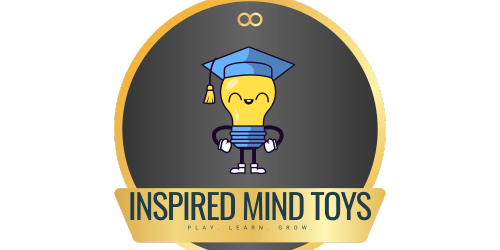Looking for educational toys that can help teach your child about time and money concepts? Look no further! This article is here to provide you with all the information you need. Whether you’re a parent looking for engaging toys for your child, an educator seeking innovative teaching tools, or simply someone interested in reading reviews about educational toys, we’ve got you covered. In this article, we’ll delve into the benefits of using educational toys to teach time and money concepts, provide you with a list of recommended toys, and answer some commonly asked questions. So sit back, relax, and get ready to explore the exciting world of educational toys!
Educational Toys For Teaching Time And Money
Exploring the Importance of Teaching Time and Money Concepts to Children
Teaching children about time and money is crucial for their overall development and future success. Understanding these concepts not only helps children in their daily lives but also sets them up for long-term benefits. As parents and educators, it is our responsibility to impart these valuable skills to children from a young age. By introducing them to basic time and money concepts through educational toys, we can make learning fun and engaging for them. Let’s delve deeper into why learning about time and money matters and the significant role we play in teaching these concepts.
Why Learning About Time and Money Matters
Time and money are two fundamental aspects of our lives. They are intertwined in almost everything we do, from planning our daily activities to managing our finances. By teaching children about time, we help them develop essential organizational skills and a sense of responsibility. Understanding the value of time allows children to manage their schedules effectively and meet deadlines, which is crucial as they grow older and face more responsibilities.
On the other hand, teaching children about money enables them to develop vital financial literacy skills. By learning about coins, bills, and budgeting, children gain a practical understanding of how money works. This knowledge will serve them well throughout their lives, as they learn the importance of saving, budgeting, and making informed financial decisions.
Long-Term Benefits of Understanding Time and Money
The benefits of understanding time and money extend far beyond the immediate practical applications. When children grasp the concept of time, they become more punctual and organized individuals. This skill will prove invaluable as they progress through school, higher education, and eventually enter the workforce. Time management skills are highly valued in all areas of life, and developing them early on sets children up for success in their future endeavors.
Similarly, having a solid foundation in money concepts equips children with the necessary tools to make informed financial decisions. Understanding how money works helps them become financially responsible individuals who can save, invest, and manage their finances effectively. These skills will benefit them throughout their lives, leading to financial stability and independence.
The Role of Parents and Educators in Imparting These Concepts
As parents and educators, we have a crucial role in teaching children about time and money. By using educational toys, we can make the learning process enjoyable and engaging for children. These toys provide hands-on experiences that allow children to explore and understand these concepts in a practical manner. By actively participating in their learning journey, we can ensure that children grasp these concepts effectively.
Many educational toys are specifically designed to teach time and money concepts. These toys cater to different age groups and learning styles, making it easier for us to choose the ones that best suit our children’s needs. By incorporating these toys into our teaching strategies, we can create a stimulating learning environment that promotes curiosity and creativity.
Basic Time Teaching Toys
Introducing children to the concept of time can be done effectively through basic time teaching toys. These toys provide a hands-on approach to learning and help children grasp the fundamentals of time.
Introduction to Analog and Digital Clocks
Analog and digital clocks are the foundation of time-telling. Educational toys that feature both types of clocks help children understand the differences and similarities between them. By exploring these toys, children can learn to read time in both analog and digital formats, fostering a comprehensive understanding of this essential skill.
Role Playing with Schedule and Routine Toys
Role playing is an effective way to teach children about time management and daily routines. Schedule and routine toys allow children to simulate real-life scenarios, such as planning their day or following a schedule. By engaging in these playtime activities, children develop a sense of responsibility and the ability to manage their time effectively.
Using Time-Telling Puzzles and Flashcards
Puzzles and flashcards are valuable tools for teaching time. These educational toys help children practice reading and interpreting clocks, enhancing their time-telling skills. By solving puzzles and engaging in flashcard activities, children can reinforce their understanding of time and strengthen their ability to read clocks accurately.
Advanced Time Teaching Toys
Once children have a basic understanding of time, they can further enhance their knowledge with advanced time teaching toys. These toys provide more complex concepts and challenges, allowing children to delve deeper into the world of time.
Learning About Time Zones with Global Time Toys
Global time toys introduce children to the concept of time zones. These toys showcase different time zones around the world and help children understand how time can vary depending on location. By exploring global time toys, children gain a broader perspective on time and develop an appreciation for cultural differences.
Understanding the Concept of Passing Time with Hourglass or Timers
Hourglass or timers are excellent educational toys for teaching children about the concept of passing time. By using these tools, children can visually observe the passage of time and learn to estimate durations accurately. This skill is essential for activities such as timed quizzes, cooking, or even managing screen time effectively.
Learning to Manage Time with Schedule and Planner Toys
Schedule and planner toys that cater to more advanced learners help children develop essential time management skills. These toys allow children to plan and organize their activities, set goals, and manage their time effectively. By engaging with schedule and planner toys, children gain valuable skills that will facilitate their success in various aspects of life.
Review of Top Time Teaching Toys
When choosing time teaching toys for children, it’s essential to consider their specific needs and learning preferences. Here’s a comparison of some popular time teaching toys that have received positive reviews from users:
Clock Puzzle Set:
- User reviews: “My child loved this puzzle set and quickly learned how to read clocks.”
- Suitable for ages: 4-6
- Features: Analog clocks with movable hands, matching digital clocks, and colorful illustrations.
Global Time Zone Clock:
- User reviews: “This clock has been a great tool for teaching my child about different time zones.”
- Suitable for ages: 8+
- Features: Clock face with multiple time zones, adjustable hands, and a world map.
Time Management Planner:
- User reviews: “My teenager has become much more organized and disciplined with this planner.”
- Suitable for ages: 12+
- Features: Daily and weekly planner pages, goal-setting sections, and time management tips.
Factors to consider when purchasing time teaching toys include age appropriateness, durability, and the specific skills or concepts you want your child to focus on.
Unconventional Ways to Teach Time Using Toys
While traditional time teaching toys are effective, there are also unconventional methods that can make learning about time more exciting and engaging for children.
Gamification Techniques for Teaching Time
Gamification involves incorporating game-like elements into learning activities to make them more enjoyable. By using educational games or apps that focus on time-telling, children can learn in a fun and interactive manner. These games often provide challenges, rewards, and a competitive edge that motivates children to improve their time-telling skills.
DIY Time Teaching Toys and Activities
Creating your own time teaching toys and activities can be a rewarding experience for both parents and children. By utilizing everyday objects such as paper plates, craft materials, and household items, you can design unique time teaching tools. DIY activities like making a clock out of a paper plate or playing “What’s the Time, Mr. Wolf?” can be a fun and cost-effective way to enhance your child’s understanding of time.
Incorporating Multimedia and Digital Games
In today’s digital age, multimedia and digital games can be powerful tools for teaching time. Educational apps, online videos, or interactive websites can provide engaging content that supplements traditional learning methods. These resources often incorporate visuals, animations, and interactive features that capture children’s attention and promote active learning.
Basic Money Teaching Toys
Introducing children to the concept of money can be done effectively through basic money teaching toys. These toys provide hands-on experiences that facilitate learning and understanding.
Introduction to Coins and Bills Using Play Money
Play money is an excellent tool to familiarize children with coins and bills. By using realistic-looking play money, children can practice counting, identifying different denominations, and understanding the value of each currency unit. Play money can be used for various role-playing activities, such as setting up a pretend store or playing cashier.
Role Playing with Cash Registers
Cash registers are interactive toys that simulate real-life transactions. By role playing as customers and cashiers, children can learn to handle money, make change, and develop basic math skills. Cash registers often come with play money, buttons, and a scanner, providing an immersive learning experience.
Using Money Puzzles, Counting Games, and Flashcards
Puzzles, counting games, and flashcards are excellent resources for teaching children about money. These educational toys allow children to practice counting coins, identifying different currency values, and solving money-related problems. By engaging with these hands-on activities, children become more confident and proficient in using money.
Advanced Money Teaching Toys
Once children have a basic understanding of money, they can further enhance their knowledge with advanced money teaching toys. These toys provide more complex concepts and challenges to deepen their understanding.
Understanding Saving and Spending with Piggy Bank Toys
Piggy bank toys teach children about the importance of saving and spending money wisely. These toys often come with separate compartments for saving, spending, and even donating. By using piggy bank toys, children can develop good saving habits and learn the value of delayed gratification.
Learning Financial Planning with Budget Management Toys
Budget management toys help children grasp the concept of financial planning. These toys often simulate real-life scenarios, such as budgeting for groceries or planning a family vacation. By engaging with budget management toys, children learn to make informed financial decisions and develop valuable skills for managing their money responsibly.
Role Playing with Shopping and Supermarket Toys
Shopping and supermarket toys provide a hands-on experience for children to understand the process of buying goods and handling money. These toys typically include play money, shopping carts, and a variety of pretend food items. By role playing as customers, sellers, or cashiers, children develop skills such as budgeting, making choices, and calculating totals.
Review of Top Money Teaching Toys
To make an informed decision when purchasing money teaching toys, it’s helpful to consider the experiences and opinions of other users. Here’s a comparison of some popular money teaching toys, along with user reviews:
Money Math Match Game:
- User reviews: “My child loved matching the coins and bills, and it helped them practice counting money.”
- Suitable for ages: 6-9
- Features: Realistic play money, matching game cards, and multiple difficulty levels.
Financial Education Board Game:
- User reviews: “This game made learning about money fun and interactive for the whole family.”
- Suitable for ages: 8+
- Features: Board game format, player tokens, play money, and scenarios that teach financial concepts.
Budgeting and Saving Playset:
- User reviews: “My child learned valuable financial skills with this playset and enjoyed playing with it for hours.”
- Suitable for ages: 10+
- Features: Play money, budgeting sheets, saving jars, and interactive components for tracking expenses and savings.
Factors to consider when purchasing money teaching toys include age appropriateness, the specific money concepts you want to focus on, and the overall durability and quality of the toy.
Unconventional Ways to Teach Money Using Toys
In addition to traditional money teaching toys, there are unconventional methods that can make learning about money more engaging for children.
Gamification Techniques for Teaching Money
Gamification can be a powerful tool for teaching money-related concepts. By using educational games or apps that focus on money management, children can learn through interactive and rewarding experiences. These games often simulate real-life situations, such as running a business or managing a budget, allowing children to apply their financial knowledge in a fun and immersive way.
DIY Money Teaching Toys and Activities
Creating your own money teaching toys and activities can be a creative and cost-effective way to enhance your child’s understanding of money. By using materials such as play money, jars, and craft supplies, you can design unique tools for teaching money-related concepts. DIY activities like setting up a pretend store, creating a budgeting game, or organizing a garage sale can provide hands-on learning experiences that make money concepts more tangible for children.
Incorporating Multimedia and Digital Games
Multimedia and digital games can be valuable resources for teaching money concepts. Educational apps, online simulations, or interactive websites offer visual and interactive content that supplements traditional learning methods. These resources often provide virtual environments where children can practice budgeting, making financial decisions, and understanding real-world money scenarios.
Closing Recommendations for Choosing Educational Toys
When choosing educational toys for teaching time and money concepts, it’s essential to consider several factors to ensure the best learning experience for your child.
Importance of Aligning Educational Toys with Child’s Learning Style
Every child has a unique learning style, and it’s important to choose toys that align with their preferences. Some children may thrive with hands-on activities, while others may prefer interactive digital games. Observing your child’s interests and preferences will help you select toys that cater to their learning style, maximizing their engagement and enjoyment.
Consideration of Child’s Age and Developmental Stage
Age appropriateness is crucial when selecting educational toys. Different toys are designed to target specific age groups, considering their cognitive and motor skills. It’s important to choose toys that match your child’s age and developmental stage to ensure that they can fully understand and benefit from the learning experiences provided.
Looking for Toys that Grow with Your Child
Children’s interests and abilities evolve as they grow, so it’s beneficial to choose toys that can adapt and grow with them. Look for toys that offer various levels of difficulty or extendable features that allow for continued learning and engagement. By investing in toys that can challenge and stimulate your child’s development over time, you ensure that they continue to derive educational benefits from their playtime.
In conclusion, teaching children about time and money concepts is essential for their cognitive and personal development. By using educational toys to introduce these concepts in a fun and engaging way, parents and educators can cultivate vital skills that will benefit children throughout their lives. Whether it’s through basic or advanced time teaching toys, or by incorporating unconventional teaching methods, the key is to create a learning environment that sparks curiosity, encourages exploration, and fosters a love for learning.
By considering factors such as age appropriateness, learning styles, and the ability of toys to grow with your child, you can make informed choices when selecting educational toys. Remember, the journey of learning is an ongoing process, and educational toys are valuable tools to foster your child’s growth and success.
Interested in seeing the products we use?
Check out our carefully crafted list of items











